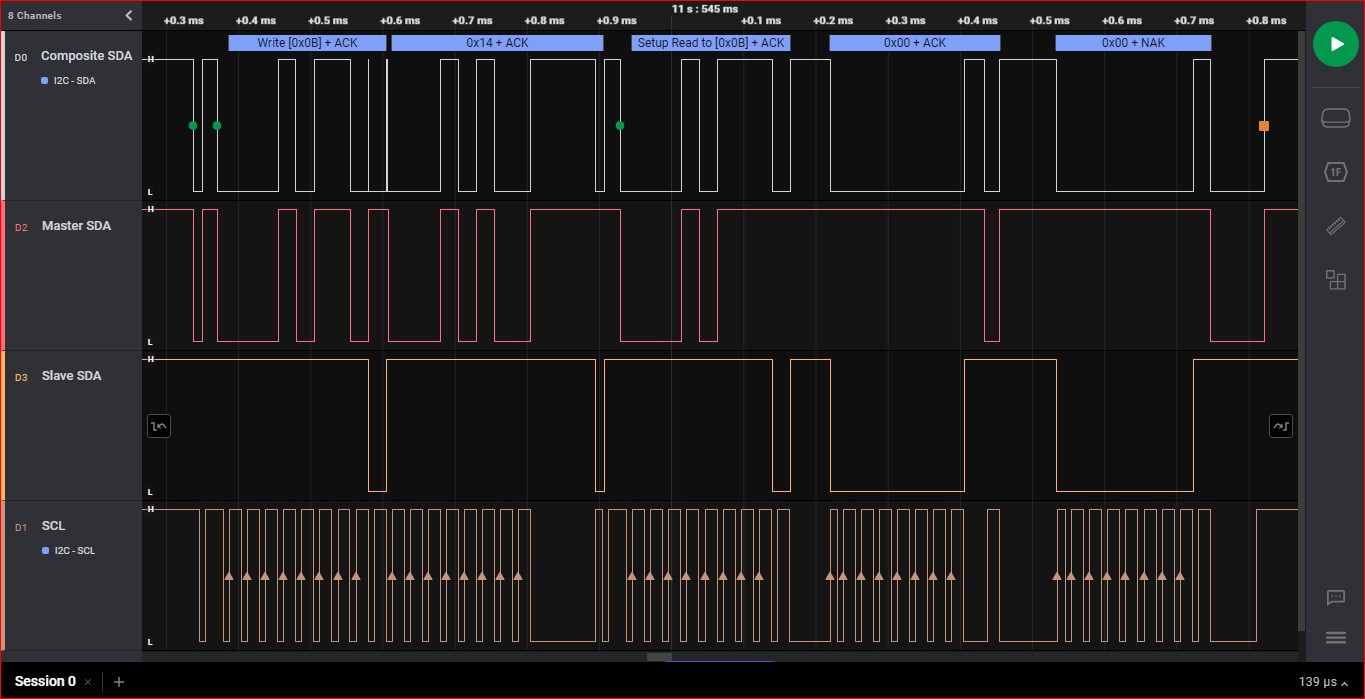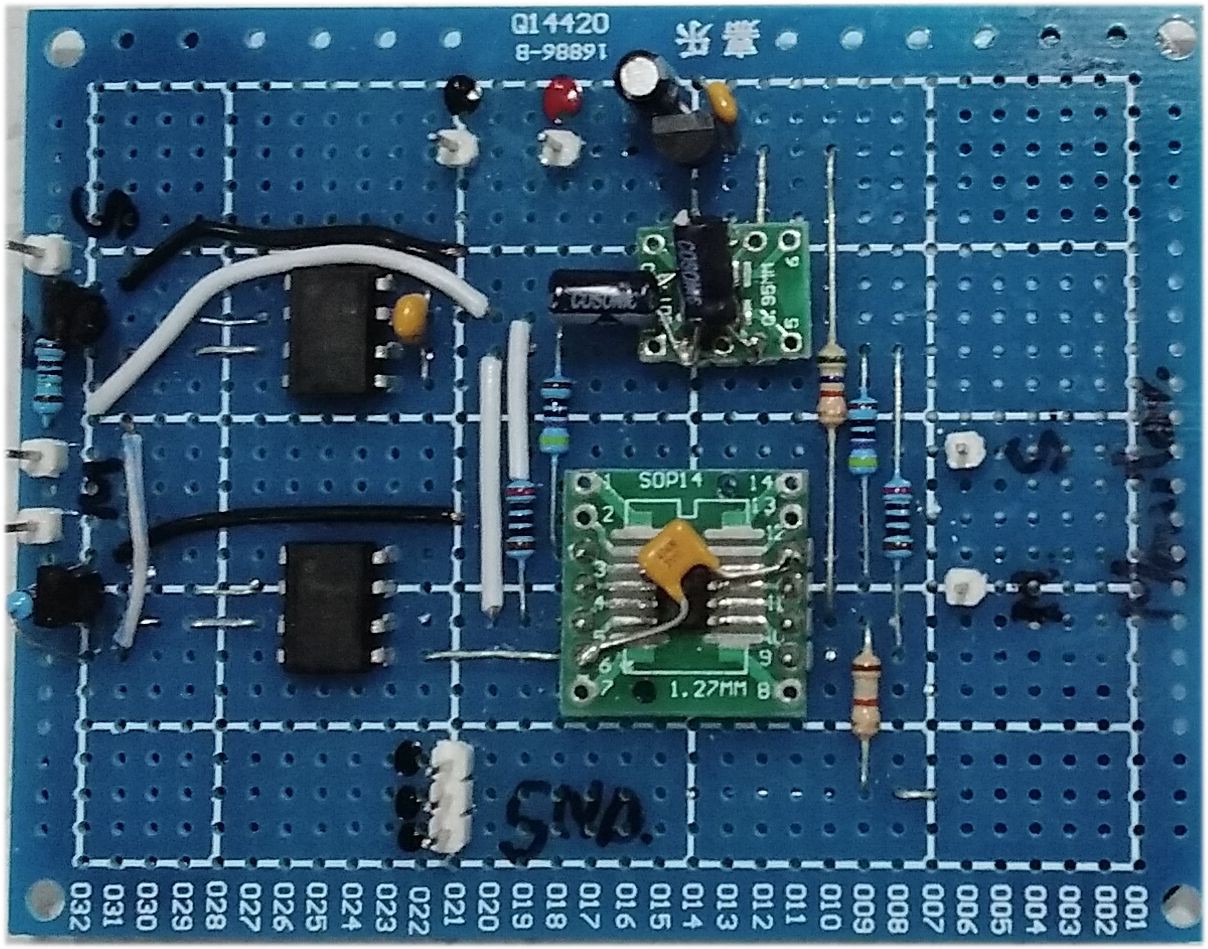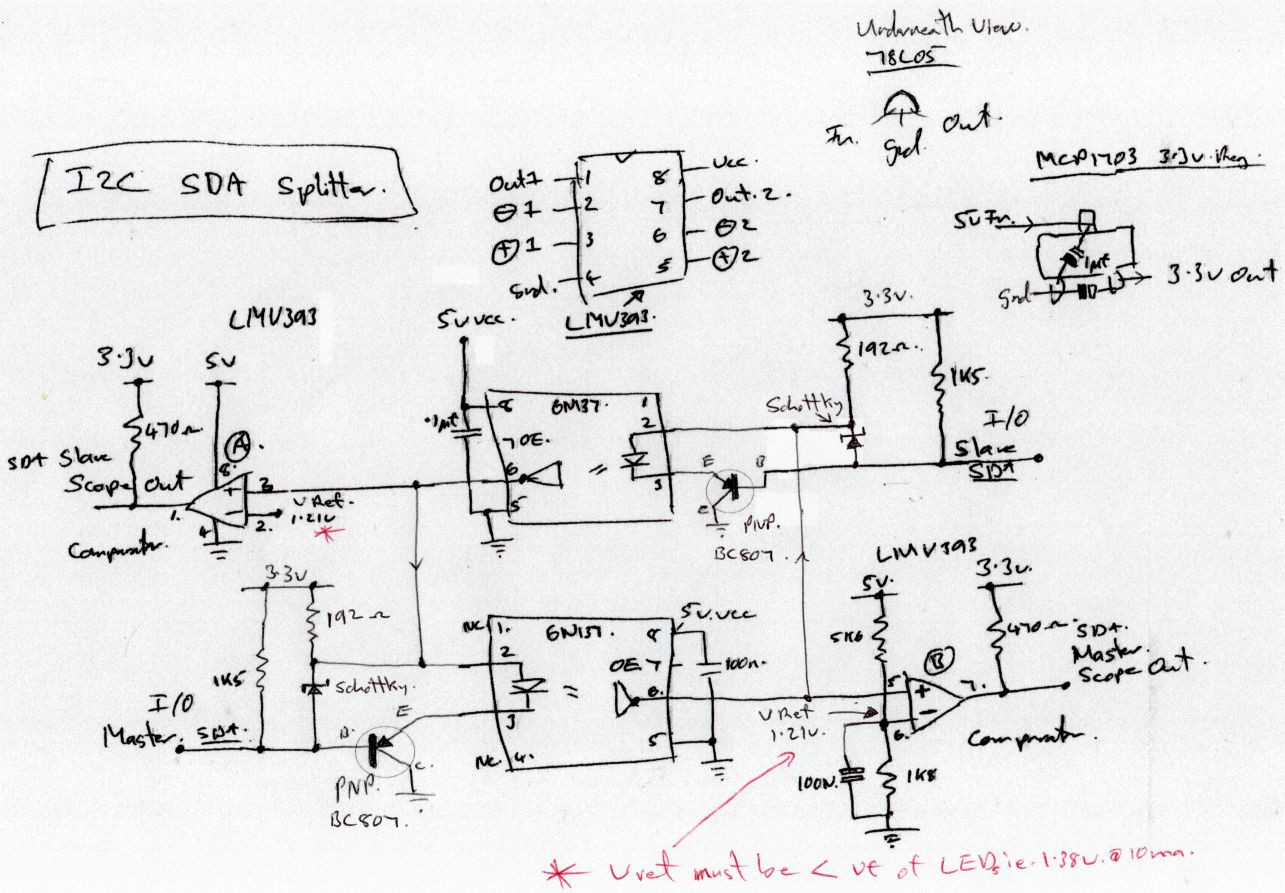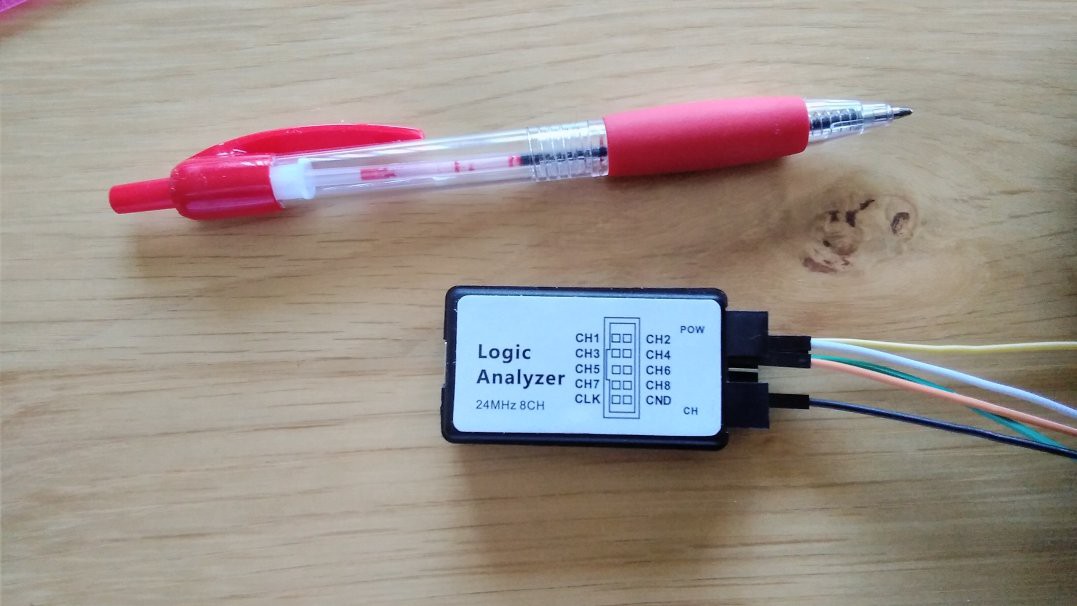4 Channel Data Analyser screen dump.
From top to bottom:
Composite SDA
Master SDA
Slave SDA.
SCL.

Logic Analyser
Rough and ready test PCB

This project is ideal for learning about the I2C protocol if you're new to it, because you can clearly see each and every transition and who's doing the transitioning.
Normally it is only possible to monitor the composite SDA line which carries both master and slave data, so it's hard to know who is sending the ACK pulses or who is holding the line low or answer the question: 'What are those narrow pulses all about' ? etc. etc.
By using a cheap multi channel data analyser ex AliExpress, plus this project, you can view all 4 channels ie. Composite Master/Slave SDA line, Separate Master line, Separate Slave line and SCL line on your PC with the free Saleae Logic 2 software. Download from www.saleae.com
A quick search of Aliexpress "USB Logic Analyzer 24MHz" will bring up plenty of units under US$10 incl shipping.
This project is a bit 'rough and ready' The schematic is hand drawn and there is no PCB artwork or .pcb files supplied. This is more than made up for by the detailed info supplied in this text.
It is designed so you can knock a board out with spare parts you may have lying around.
Circuit Diagram:

Desciption of Circuit :
I won't describe the isolation circuitry in full as it's a standard arrangement, better described by the likes of TI etc.
The two signals on lines labelled I/O Master SDA and I/O Slave SDA are separated with a standard dual opto coupler arrangement. I used the 6N137 ICs here due to their much faster switching times than their 6N138 or 139 cousins. 138 and 139 versions require 1K5 base bias resistors at 100Khz, between pin 7 and ground also. Pin 7 of the 6N137 has a different purpose and is an output enable pin. Pulled high internally, you can leave it open circuit. You can use any fast optos here though if you want to.
In addition to the standard I2C isolation arrangement circuitry sourced from TI's app notes, I've added two comparator gates which enable the Master signal and Slave signal to be filtered and output separately.
These comparators will only switch low when their associated 6N137's LED is active. ie. when 6N137's pin 6 is at GND level which is below the 1.21 volt comparator threshold.
The 1.21 volt comparator threshold, filters out the 1.38 volt LED Vf signal which is produced when the other non associated 6N137's LED is activated.
1.21 Volt comparator threshold was chosen due to the fact I had some 5K6 and 1K8 resistors available.
Any Vref between 1.38 LED Vf and pin 6 of 6N137 GND voltage will suffice.
___________________________________________________________
The comparators' pins 3 & 5 get to see 3.3v, 1.38v or GND levels depending on who's doing the switching.
A low going signal input to I/O Slave SDA will never reach pin 7 of Master comparator because its pin 5 input will see 1.38 LED voltage which is still above the 1.21 V threshold. The same applies to the duplicate I/O Master SDA circuit.
The Composite SDA signal line to the data analyser can be taken from either I/O Master SDA or I/O Slave SDA. They both see the same signal after all, separated only by the circuit's propogation delay.
The SCL lines wire directly between Master and Slave devices because the master alone (under most circumstances) has control of this line. The I2C spec does allow for the Slave to take control of this line under special circumstances, but I've never come across it. You could, however, have a duplicate circuit arrangement for SCL lines if you so choose. It's up to you.
NB: 6N137 optos and LMV393 comparators are powered with 5 volts for faster switching times than would be had from 3.3 volt supply. All 4 outputs are open collector devices...
Read more »



What is the value of the Zener's ?